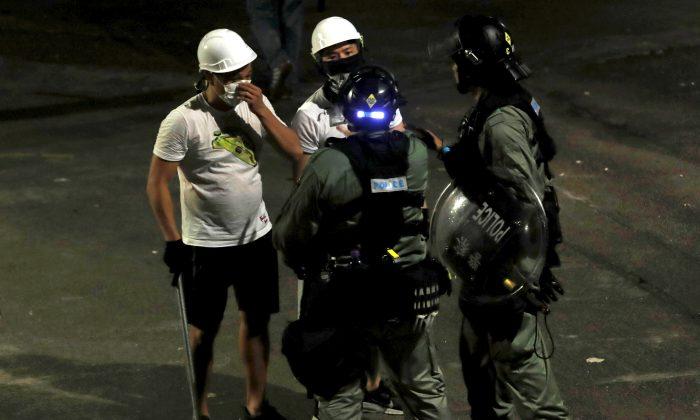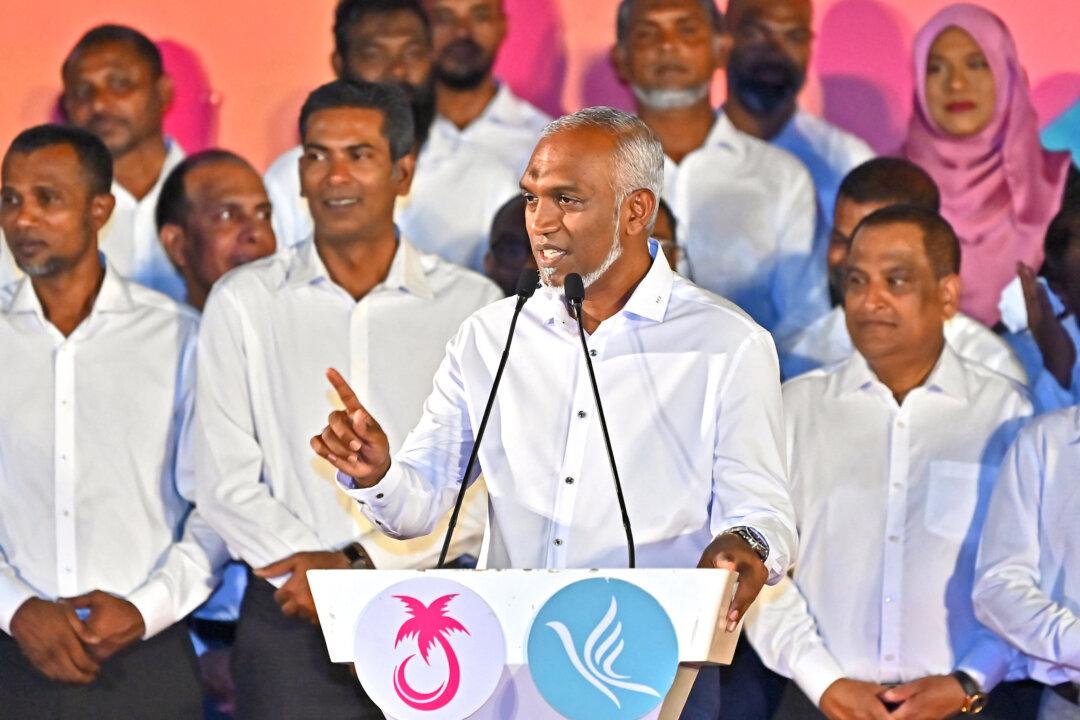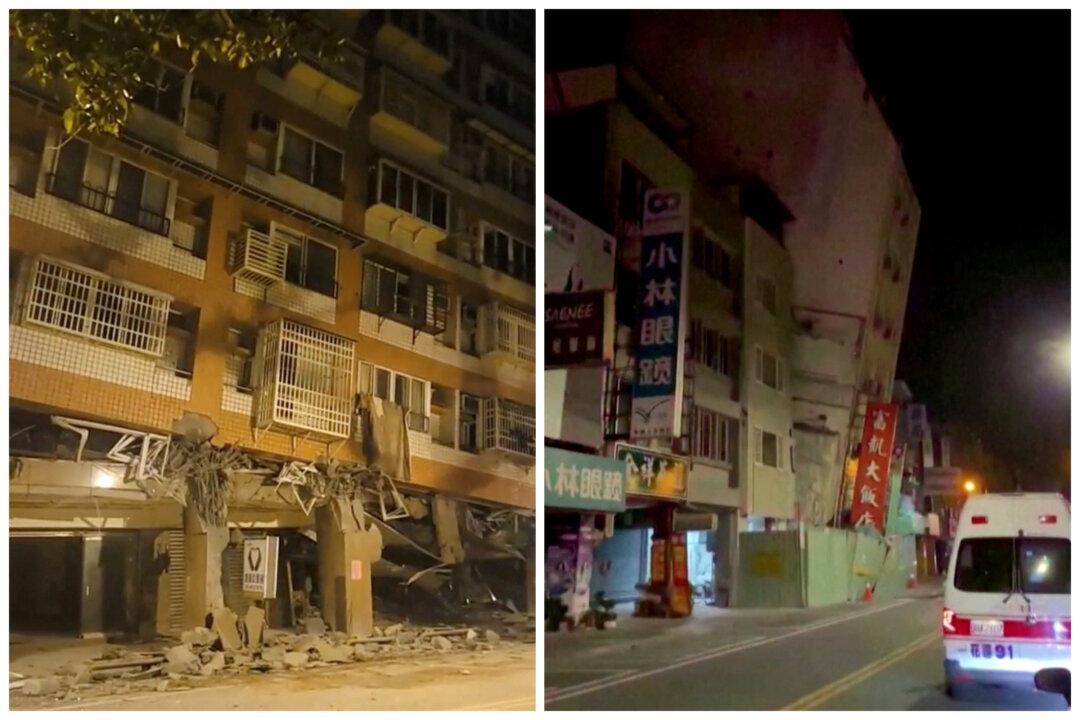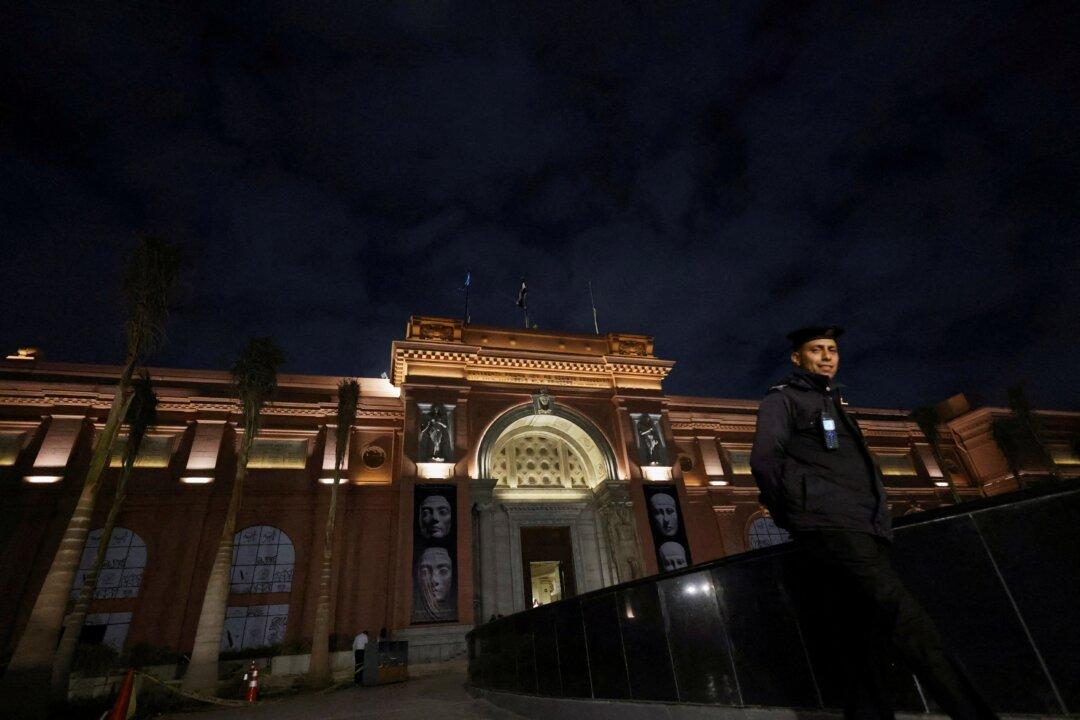HONG KONG—Hong Kong protesters, many dressed in black and wearing surgical masks amid fears over the new coronavirus, held sit-ins in the Chinese-ruled city on Friday to mark seven months since an attack by an armed mob on anti-government demonstrators.
Protesters gathered in at least two locations, including more than 100 near the northern Yuen Long train station, in the New Territories and near the border with the mainland, where more than 100 white-shirted men beat up black-shirted activists and passers-by on July 21.
Police came in for widespread criticism at the time for not preventing the attack, and for not immediately apprehending any of the attackers when they retreated into a nearby village and were surrounded by officers.
The protesters chanted slogans on Friday including “Liberate Hong Kong! Revolution of our times” and “Hong Kong independence, the only way out!”
“We will never forget what happened on July 21,” said Lily, a protester dressed in black, part of a group of a few dozens at the Causeway Bay metro station on Hong Kong island.
“We shouldn’t forget to resist despite the outbreak of the Wuhan pneumonia,” she said, referring to the central city in mainland China where the coronavirus outbreak originated.
The Yuen Long violence was one of the highest-profile attacks since protests against a now-withdrawn extradition bill escalated in June last year.
The movement has since broadened to include demands for full democracy for the former British colony that returned to Chinese rule in 1997, with protesters angry at perceived Chinese meddling in the city’s promised freedoms—a charge Beijing denies. Only a very small minority are calling for independence from China.
Protests have lost their intensity this year, with many people avoiding large crowds in the densely populated financial hub due to the coronavirus outbreak which has killed two of the 69 patients in the city.
But the outbreak has exacerbated anger with the city’s leadership and the influence of Communist Party rulers in Beijing. In particular, Hong Kong leader Carrie Lam’s refusal to seal the border with mainland China, seen by many as a move to appease Beijing, has infuriated Hongkongers.
Lam has said a full closure of the border would be impractical, inappropriate, and “discriminatory” and that the government’s response to the crisis was based on scientific advice and had no “political considerations.”
There have been sporadic weekend protests drawing hundreds since Hong Kong reported its first patient last month, demanding full closure of the border and opposing some buildings being turned into quarantine centers. These have been largely peaceful.
But protesters last month torched the ground floor of one building due to be set up as a quarantine center, forcing authorities to ditch the plan.
A Hong Kong police officer was confirmed to be infected with the coronavirus on Friday. The 48-year-old officer had attended a banquet with 59 other police in the island’s Western district on Tuesday, police said.
Everyone who attended is now quarantined.
Television footage showed some protesters popping a champagne bottle to celebrate—the police became a target of protest violence last year amid accusations of brutality, a charge they deny.






Friends Read Free